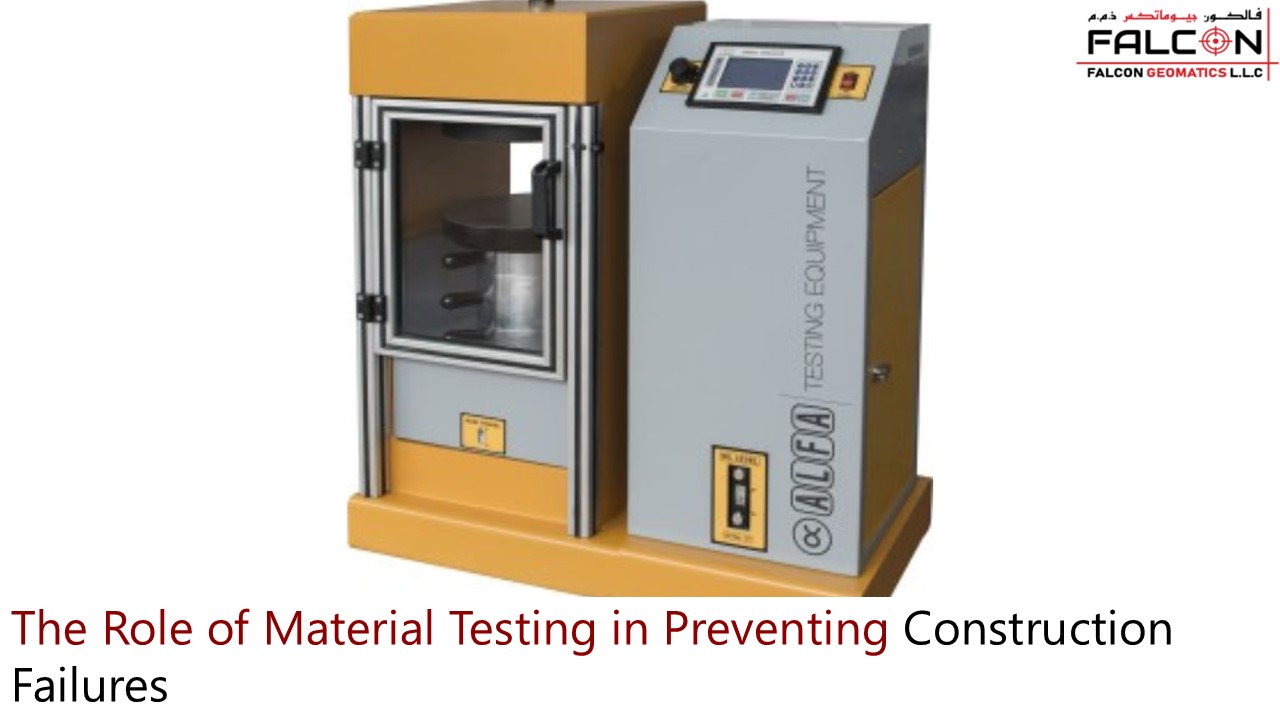The Role of Material Testing in Preventing Construction Failures - PowerPoint PPT Presentation
Title:
The Role of Material Testing in Preventing Construction Failures
Description:
By investing in extensive material testing, construction professionals may avoid costly failures and ensure projects are finished safely and effectively. – PowerPoint PPT presentation
Number of Views:0
Date added: 15 October 2024
Slides: 11
Provided by:
falcongeo
Category:
Medicine, Science & Technology
Tags:
Title: The Role of Material Testing in Preventing Construction Failures
1
The Role of Material Testing in Preventing
Construction Failures
2
Introduction
- In the construction sector, the necessity of
guaranteeing structural safety and lifespan
cannot be stressed. Material testing is a vital
component of achieving this goal. - This procedure entails evaluating the physical
and chemical qualities of construction materials
to determine their suitability for particular
uses. - By investing in extensive material testing,
construction professionals may avoid costly
failures and ensure projects are finished safely
and effectively.
3
Understanding Materials Testin
- Compression Testing Compression testing measures
the strength of materials under compressive
loads. - Tensile Testing Tensile testing evaluates how
materials respond under tension, showing their
ductility and tensile strength. - Flexural Testing Flexural testing evaluates a
material's capacity to withstand deformation
under load. - Durability Testing Durability testing determines
how well materials endure environmental
conditions such as moisture, temperature changes,
and chemical exposure.
4
Preventing Construction Failure
- 1. Identifying material deficiencies
- One of the key functions of material testing is
to detect flaws or problems in materials before
they are used for construction. For example, if
concrete samples show lower compressive strength
than planned, the project team can take
corrective action, such as using a higher-grade
concrete mix. Early detection of such flaws can
help to avoid catastrophic failures in the
future, such as structural collapses or costly
repairs.
5
- 2. Ensuring Compliance with Standards
- Construction projects must follow numerous local
and international construction codes and
standards. Material testing ensures that these
regulations are followed, ensuring that materials
fulfill the quality and safety standards that
have been established. Failure to achieve these
criteria may result in legal implications and
greater liability for building companies. - 3. Improving structural integrity
- Material testing is critical in ensuring the
structural integrity of buildings and
infrastructure. Engineers can design structures
that can survive environmental stressors such as
earthquakes, high winds, and heavy weights if
they understand how different materials behave in
different environments. This understanding is
especially important in locations prone to
natural disasters, where even modest material
shortcomings can have serious repercussions.
6
- 4. Supporting Lifecycle Assessments
- In today's construction context, sustainability
and environmental effect are important issues.
Material testing provides critical data for
lifecycle evaluations, allowing builders to
better understand materials' long-term
performance and environmental impact. This
information can help guide decisions that promote
sustainability and lower a project's carbon
impact.
7
- 5. Long-term cost savings
- While some may consider material testing prices
to be an additional expense, the reality is that
investing in testing can result in significant
cost savings over time. Companies save money on
repairs, lawsuits, and project delays by avoiding
construction disasters. Furthermore, high-quality
materials require less frequent repair and
replacement, resulting in lower operating
expenses.
8
Conclusion
- Material testing is an essential part of the
construction process that prevents failures.
Material testing protects both investments and
lives by discovering material flaws, assuring
standard compliance, improving structural
integrity, assisting with lifetime evaluations,
and promoting long-term cost savings. - In a business where safety and quality are
paramount, implementing rigorous material testing
processes is not only prudent, but also
necessary. As construction professionals continue
to innovate and push the frontiers of design and
engineering, material testing will play an
increasingly important role in assuring the
success and safety of building projects around
the world. - Investing in material testing ensures quality,
safety, and the future of building.
9
Contact Us
- Address Ahammed Kamal Warehouse 6, Street 10C
Ras al Khor Industrial 1, PO.Box.238544, Dubai,
United Arab Emirates - 97143279333 97142299555
- sales_at_falcon-geosystems.com
- https//www.falcon-geosystems.com/
10
THANK YOU































